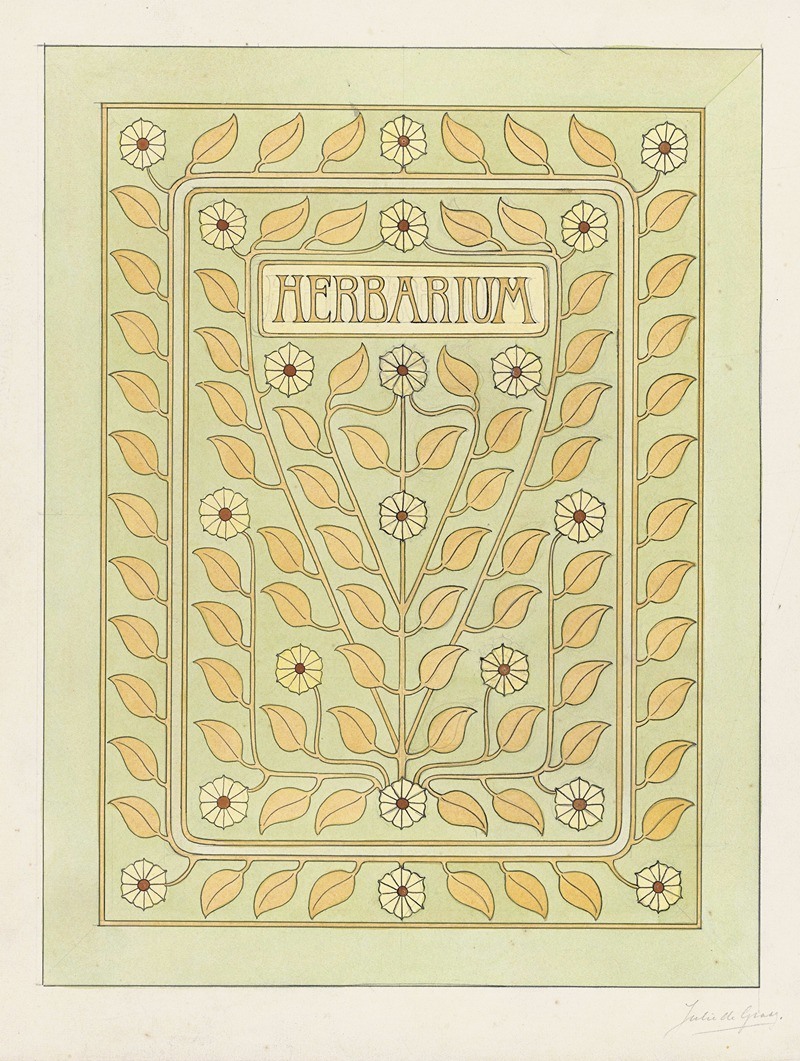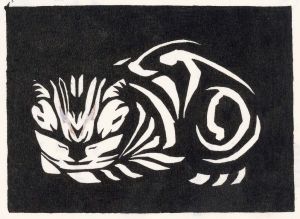
Ontwerp voor een omslag voor een herbarium
A hand-painted replica of Julie de Graag’s masterpiece Ontwerp voor een omslag voor een herbarium, meticulously crafted by professional artists to capture the true essence of the original. Each piece is created with museum-quality canvas and rare mineral pigments, carefully painted by experienced artists with delicate brushstrokes and rich, layered colors to perfectly recreate the texture of the original artwork. Unlike machine-printed reproductions, this hand-painted version brings the painting to life, infused with the artist’s emotions and skill in every stroke. Whether for personal collection or home decoration, it instantly elevates the artistic atmosphere of any space.
Julie de Graag (1877–1924) was a Dutch artist known for her distinctive style in graphic arts, particularly in woodcuts and linocuts. Her work is characterized by its simplicity, clarity, and strong use of line, often depicting natural subjects such as plants and animals. One of her notable works is "Ontwerp voor een omslag voor een herbarium" (Design for a Cover for a Herbarium), which exemplifies her skill in combining artistic design with botanical themes.
Julie de Graag was born in Gorinchem, Netherlands, and studied at the Royal Academy of Art in The Hague. She was part of the Dutch Art Nouveau movement, which emphasized decorative arts and was influenced by the natural world. Her work often reflects the Art Nouveau style's organic forms and flowing lines, yet it also possesses a unique simplicity and directness that set her apart from her contemporaries.
"Ontwerp voor een omslag voor een herbarium" is a testament to de Graag's interest in nature and her ability to translate it into art. A herbarium is a collection of preserved plant specimens, and designing a cover for such a collection would require an understanding of both botanical accuracy and aesthetic appeal. De Graag's design likely incorporates her signature style of clean lines and detailed depiction of plant forms, creating a harmonious and visually appealing cover that would complement the scientific nature of a herbarium.
Throughout her career, de Graag was associated with several artistic groups, including the Hague branch of the Dutch artists' society Arti et Amicitiae. Her work was exhibited in various exhibitions, and she gained recognition for her contributions to graphic arts. Despite her relatively short life, de Graag left a significant impact on Dutch art, particularly in the realm of printmaking and design.
Her work, including "Ontwerp voor een omslag voor een herbarium," reflects a deep appreciation for the natural world and an ability to distill its essence into art. This piece, like many of her works, demonstrates her meticulous attention to detail and her skill in creating compositions that are both aesthetically pleasing and thematically appropriate.
Julie de Graag's legacy continues to be appreciated by art historians and collectors, and her works are held in various collections, including those of museums dedicated to graphic arts and Dutch cultural heritage. Her contribution to the field of graphic design and her unique approach to depicting nature remain influential, and her works are studied for their artistic and historical significance.
In summary, "Ontwerp voor een omslag voor een herbarium" is a fine example of Julie de Graag's artistic talent and her ability to blend art with nature. Her work continues to be celebrated for its beauty, precision, and the unique perspective she brought to the Dutch Art Nouveau movement.











